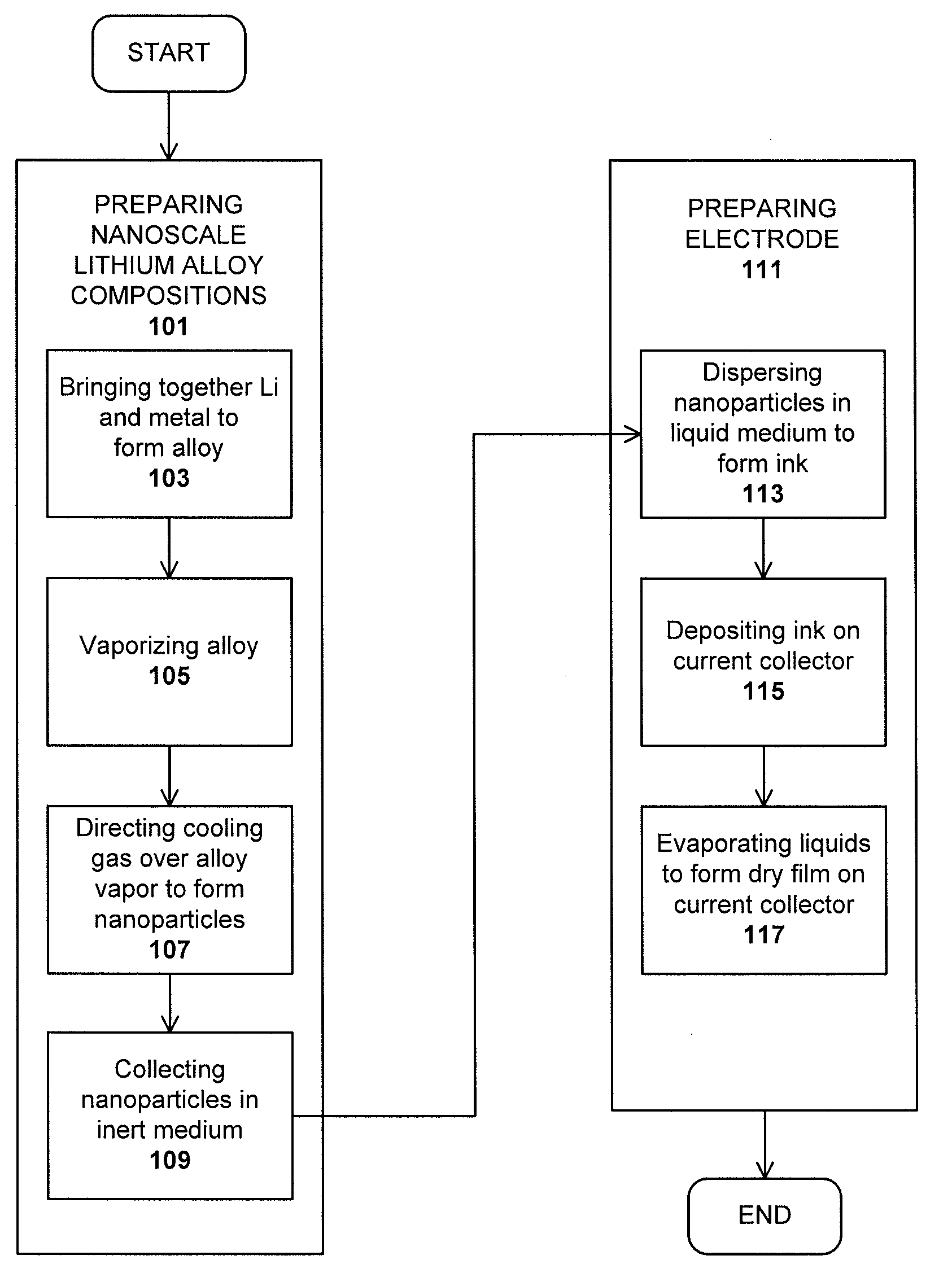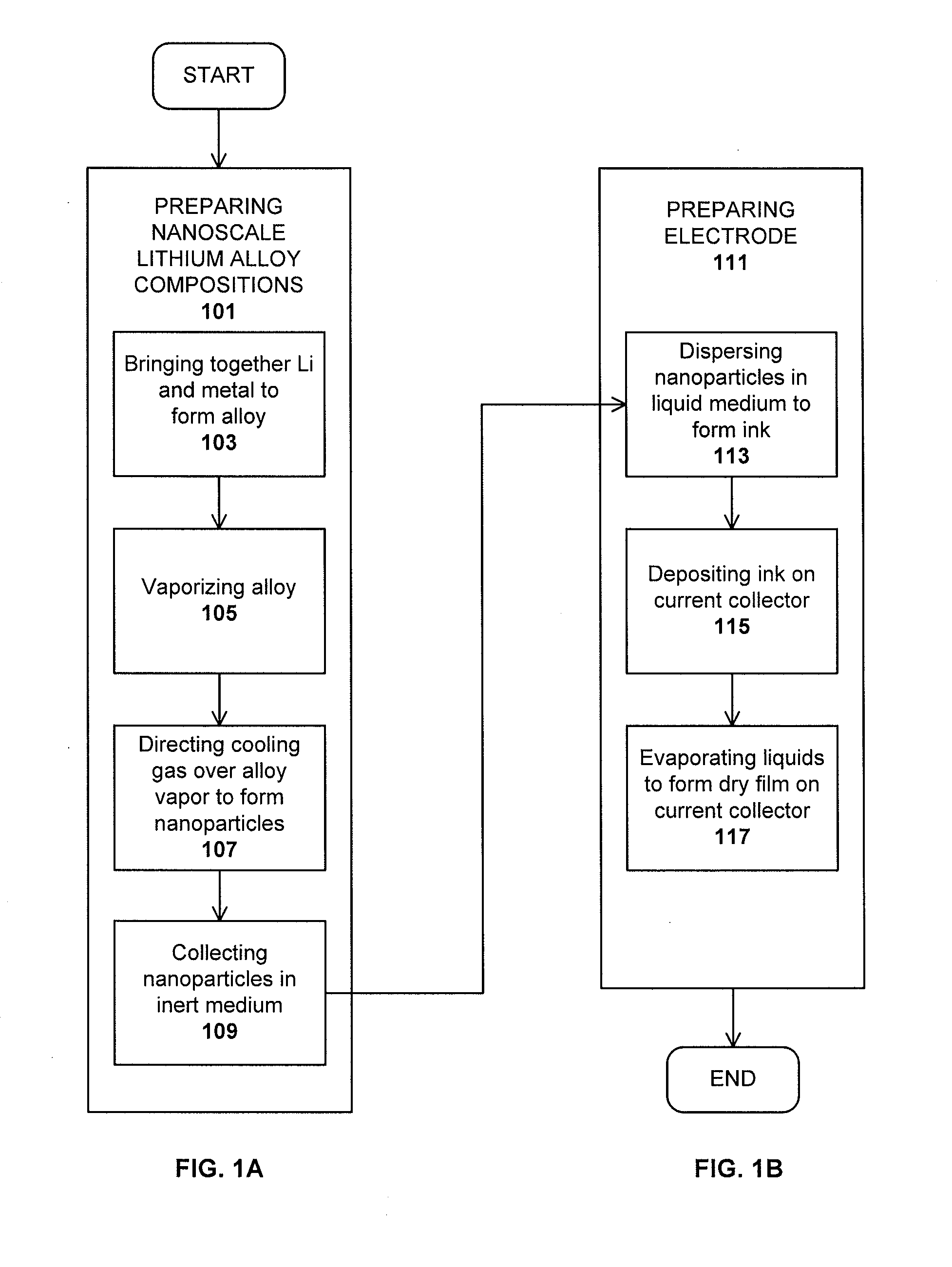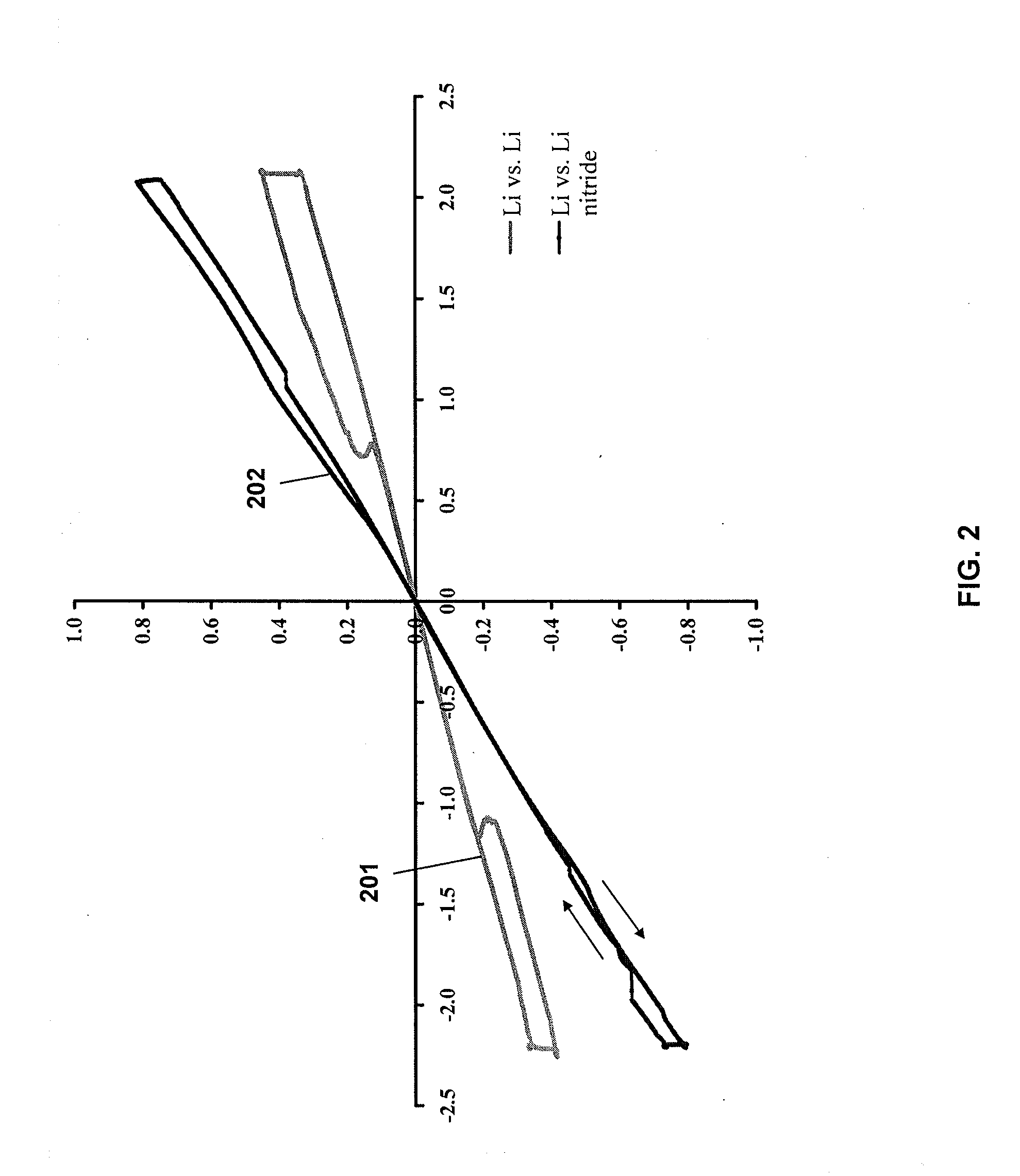Lithium nanoparticle compositions for use in electrochemical applications
- Summary
- Abstract
- Description
- Claims
- Application Information
AI Technical Summary
Benefits of technology
Problems solved by technology
Method used
Image
Examples
example 1
PREPARATION OF A Li—Mg ELECTRODE
[0068]A nanoscale Li alloy composition comprising 100 mg of Li—Mg nanometal powder was added to 50 mg of 1 M lithium hexafluorophosphate in 1:1 ethylene carbonate / diethyl carbonate and 3 mg of Timcal® conductive graphite in a non-reactive container. The container was sealed and blended on a vortex mixer for 5 minutes.
[0069]The resulting ink was applied to a copper current collector and tested in a 2032CR coin cell against a Li metal counter electrode. The open circuit potential of the cell was 2.7 mV vs. Li / Li+.
PUM
| Property | Measurement | Unit |
|---|---|---|
| Thickness | aaaaa | aaaaa |
| Thickness | aaaaa | aaaaa |
| Electrical conductivity | aaaaa | aaaaa |
Abstract
Description
Claims
Application Information
 Login to View More
Login to View More - R&D
- Intellectual Property
- Life Sciences
- Materials
- Tech Scout
- Unparalleled Data Quality
- Higher Quality Content
- 60% Fewer Hallucinations
Browse by: Latest US Patents, China's latest patents, Technical Efficacy Thesaurus, Application Domain, Technology Topic, Popular Technical Reports.
© 2025 PatSnap. All rights reserved.Legal|Privacy policy|Modern Slavery Act Transparency Statement|Sitemap|About US| Contact US: help@patsnap.com



